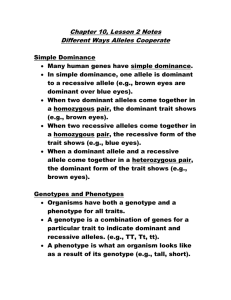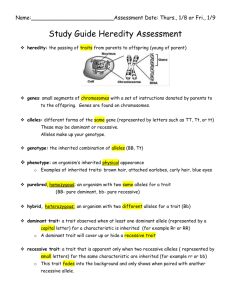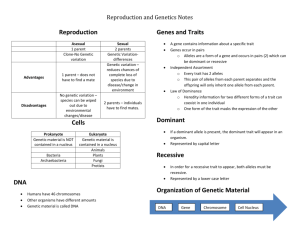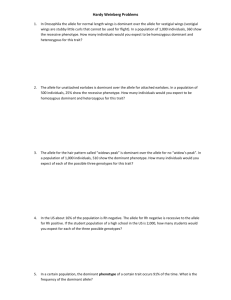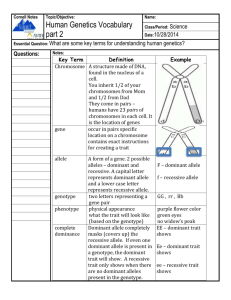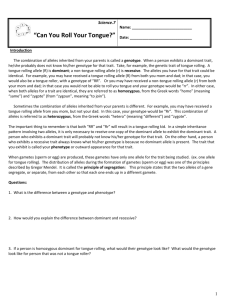Chapter 4
advertisement
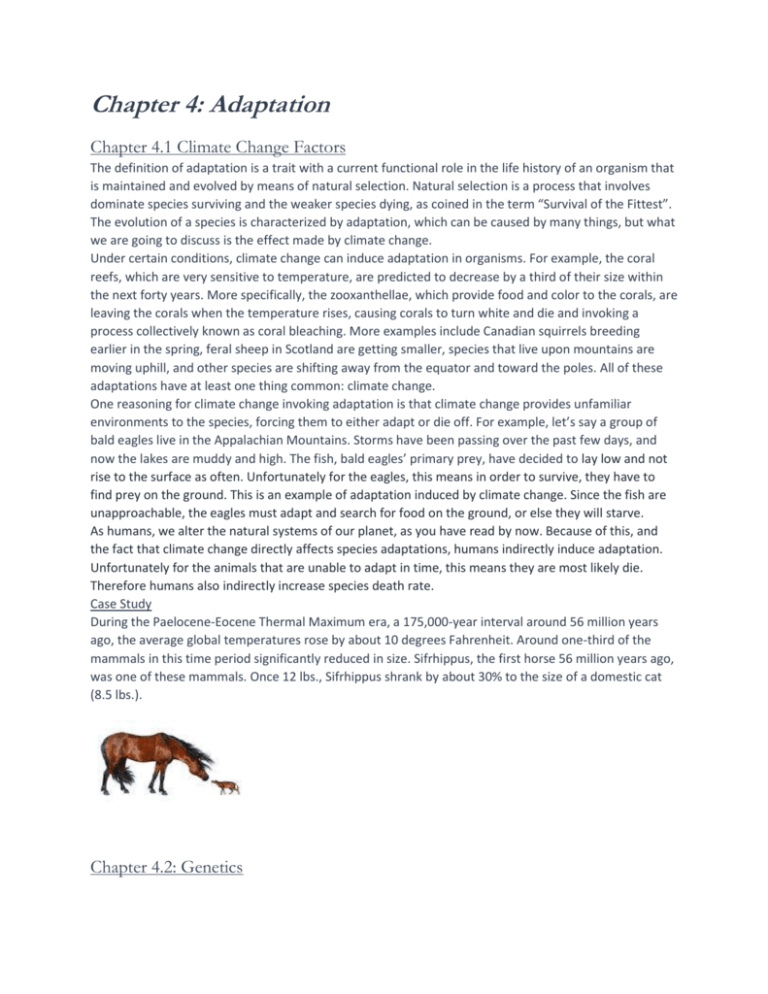
Chapter 4: Adaptation Chapter 4.1 Climate Change Factors The definition of adaptation is a trait with a current functional role in the life history of an organism that is maintained and evolved by means of natural selection. Natural selection is a process that involves dominate species surviving and the weaker species dying, as coined in the term “Survival of the Fittest”. The evolution of a species is characterized by adaptation, which can be caused by many things, but what we are going to discuss is the effect made by climate change. Under certain conditions, climate change can induce adaptation in organisms. For example, the coral reefs, which are very sensitive to temperature, are predicted to decrease by a third of their size within the next forty years. More specifically, the zooxanthellae, which provide food and color to the corals, are leaving the corals when the temperature rises, causing corals to turn white and die and invoking a process collectively known as coral bleaching. More examples include Canadian squirrels breeding earlier in the spring, feral sheep in Scotland are getting smaller, species that live upon mountains are moving uphill, and other species are shifting away from the equator and toward the poles. All of these adaptations have at least one thing common: climate change. One reasoning for climate change invoking adaptation is that climate change provides unfamiliar environments to the species, forcing them to either adapt or die off. For example, let’s say a group of bald eagles live in the Appalachian Mountains. Storms have been passing over the past few days, and now the lakes are muddy and high. The fish, bald eagles’ primary prey, have decided to lay low and not rise to the surface as often. Unfortunately for the eagles, this means in order to survive, they have to find prey on the ground. This is an example of adaptation induced by climate change. Since the fish are unapproachable, the eagles must adapt and search for food on the ground, or else they will starve. As humans, we alter the natural systems of our planet, as you have read by now. Because of this, and the fact that climate change directly affects species adaptations, humans indirectly induce adaptation. Unfortunately for the animals that are unable to adapt in time, this means they are most likely die. Therefore humans also indirectly increase species death rate. Case Study During the Paelocene-Eocene Thermal Maximum era, a 175,000-year interval around 56 million years ago, the average global temperatures rose by about 10 degrees Fahrenheit. Around one-third of the mammals in this time period significantly reduced in size. Sifrhippus, the first horse 56 million years ago, was one of these mammals. Once 12 lbs., Sifrhippus shrank by about 30% to the size of a domestic cat (8.5 lbs.). Chapter 4.2: Genetics Now that you know the reasoning behind the adaptation of a species, it’s time to find out the cause, and that’s where genetics steps in, genetics being the study of genes, heredity, and variation in living organisms. Adaptation occurs when a new gene combination, known as an allele, is formed in the gene pool of a species, changing the way some of the organisms in that particular population develop, for better or for worse. I say for worse, because the change could have just as much of a chance of being beneficial as it could detrimental to the particular organism. That’s how evolution works, constant amount of changes brining up new traits, the bad ones being weeded out and the good ones being passed down to advance future generations for the betterment of survival. So, how do these traits form? To understand that, you must know the relationship between genotypes and phenotypes and the concept of punnet squares. A genotype is the genetic makeup of a cell, and a phenotype is the physical, observational trait that is produced by said genotype. Each genotype is made up of the combination of two alleles, which could consist of a dominant allele and recessive allele, or simply a pair of either. Depending on the pair, you can have one of a few different types of traits develop in an organism, depending on the species. The most basic ones are the trait that appears whenever there is at least one dominant allele in the mix and the one that only appears if the genotype consists of only recessive alleles. For some types of organisms there is a third trait that could be developed if you have two dominant alleles paired together. For example, let’s say you have two birds who both carry the genotype for blue coloring, Bb. When the two mate and pass down their genes, their offspring has a chance of inheriting one of three possible combinations, BB (dominant dominant), Bb (dominant recessive), and bb (recessive recessive). As you can see, their offspring inherits only one allele from each parent for the trait, with a 50% chance that it will be blue just like its parents. But, I’m sure you’re wondering what exactly that picture is actually showing, and the answer is that is one example of a punnet square. Punnet squares are used in order to determine the percent chance that a certain trait would be passed down, as well as show all the different possible combinations that could arise.



